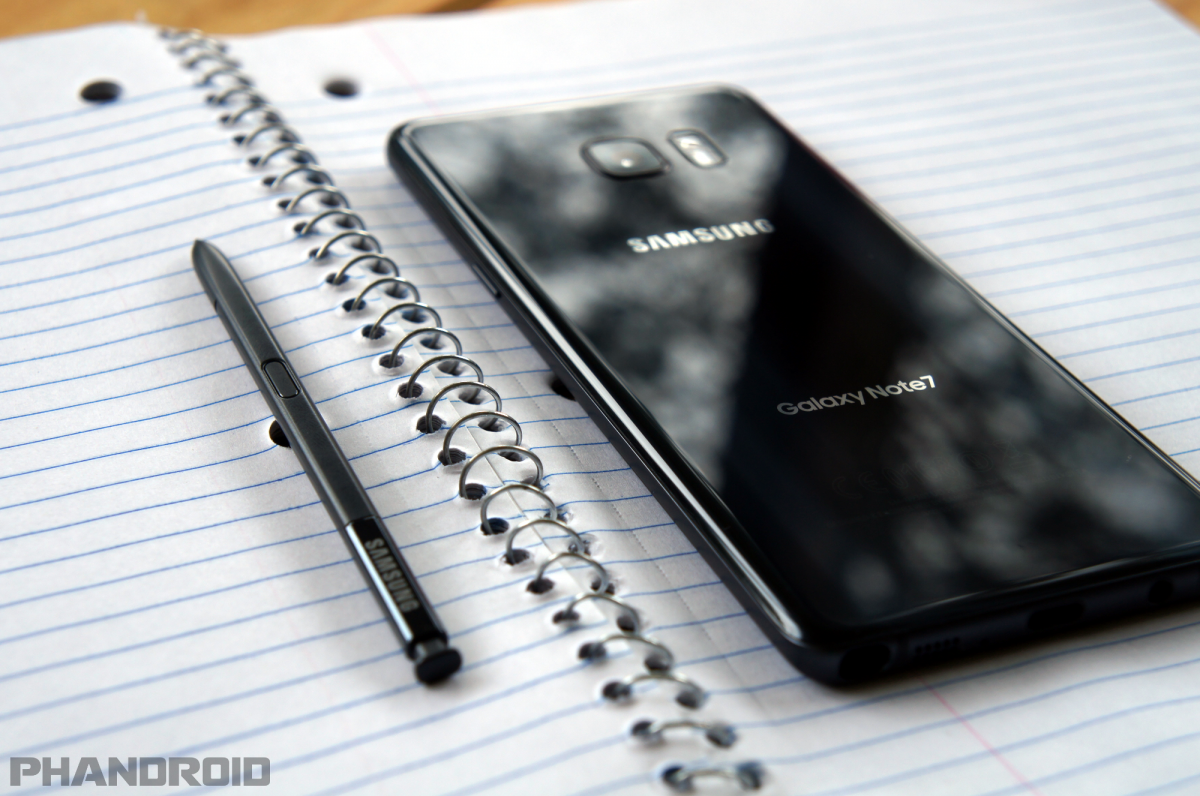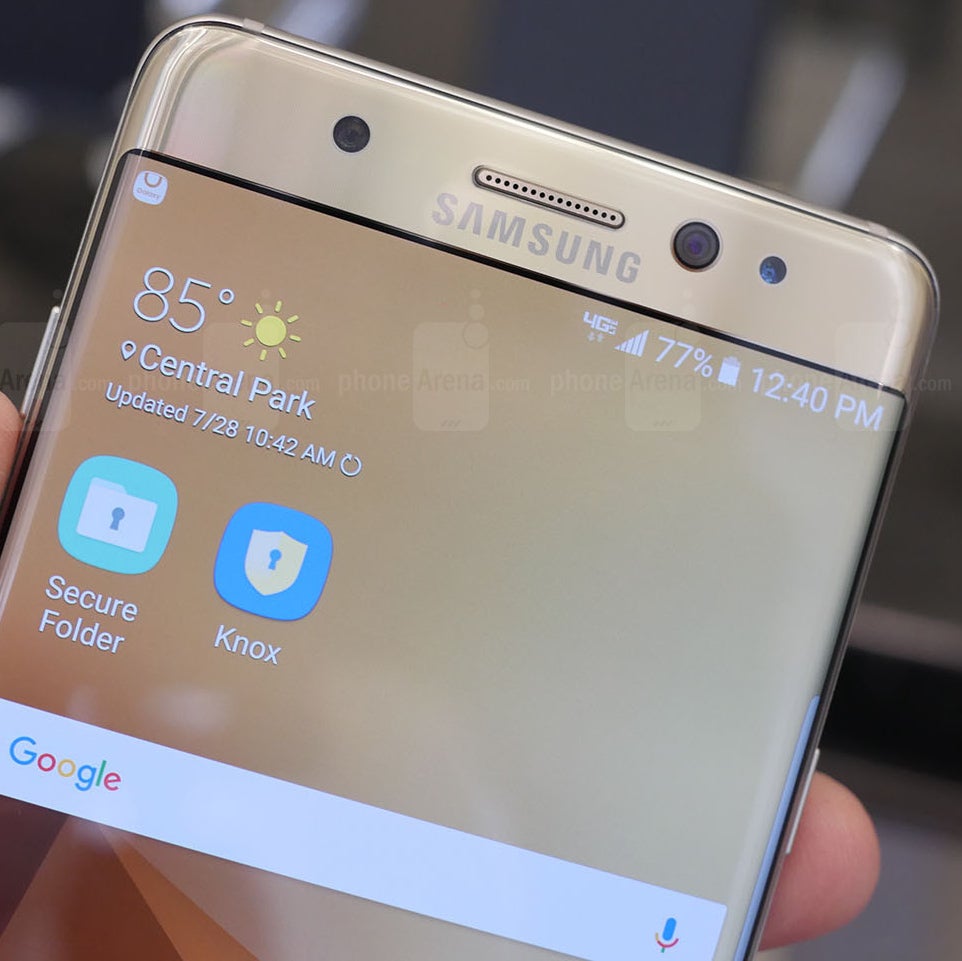samsung galaxy note 7 sets the stage for this enthralling narrative, offering readers a glimpse into a story that is rich in detail, marked by both groundbreaking innovation and unforeseen challenges. Released in 2016, the Galaxy Note 7 was hailed as a flagship device that pushed the boundaries of mobile technology, boasting impressive features such as a stunning display, an advanced camera, and stylus functionality. However, alongside its acclaim came a series of safety concerns that would ultimately overshadow its remarkable capabilities, leading to one of the most notable recalls in smartphone history.
The Galaxy Note 7 was not just an upgrade; it showcased significant technological advancements over its predecessors, introducing features like an iris scanner and improved water resistance. Upon its launch, consumer reception was overwhelmingly positive, with many praising its design and performance. Yet, the unforeseen safety issues that surfaced shortly after its release would alter its trajectory and have lasting implications for Samsung and the industry as a whole.
Overview of Samsung Galaxy Note 7

The Samsung Galaxy Note 7 was unveiled on August 2, 2016, representing a significant chapter in the evolution of Samsung’s Note series. It was launched with high expectations, fueled by the previous successes of the Note line. However, its journey was marred by a series of controversies that affected its reception in the market. The Note 7 was noted for its premium features, compelling design, and innovative technology, but it ultimately faced challenges that would alter its place in smartphone history.
The Galaxy Note 7 introduced several technological advancements over its predecessors, including a dual-edge curved screen and enhanced S Pen functionality. The device boasted a 5.7-inch Super AMOLED display with a resolution of 1440 x 2560 pixels, ensuring vibrant colors and sharp images. Additionally, it featured a powerful Snapdragon 820 processor, 4GB of RAM, and came with up to 256GB of internal storage that could be expanded via microSD. Notably, it was also water and dust resistant with an IP68 rating, a first for the Note series.
History and Timeline of Release
The timeline of the Samsung Galaxy Note 7’s release is pivotal to understanding its impact on the smartphone market. Here are key dates and events surrounding its lifecycle:
- August 2, 2016: Samsung officially unveiled the Galaxy Note 7 during a launch event in New York, showcasing its features and new enhancements.
- August 19, 2016: Pre-orders for the Galaxy Note 7 began, with customers eager to secure their devices ahead of the official release.
- September 2016: Reports of battery failures emerged, leading Samsung to issue a global recall of the devices.
- October 11, 2016: The Note 7 was officially discontinued after further incidents of battery fires, marking a dramatic end to the device’s production.
Technological Advancements Compared to Predecessors, Samsung galaxy note 7
The Galaxy Note 7 was a beacon of innovation, setting a new standard for the Note series. Among its advancements were:
- Display Technology: The device featured an edge-to-edge curved display, enhancing the viewing experience and providing a sleek design.
- Enhanced S Pen: Improvements in the S Pen included features like Screen Off Memo and the ability to write on the screen without unlocking the device.
- Camera Capabilities: The Note 7 came equipped with a 12 MP rear camera with Dual Pixel technology, providing faster autofocus and improved low-light performance.
- Security Features: It introduced an iris scanner for biometric security, offering an additional layer of protection beyond fingerprint recognition.
Market Impact and Consumer Reception
Upon its launch, the Samsung Galaxy Note 7 received generally positive reviews, praised for its design, display quality, and performance. However, the subsequent fallout from battery issues significantly impacted its reception.
- Sales Figures: Initial sales were strong, with over 1 million units sold in the first few weeks, indicating a high level of consumer interest.
- Critic Reviews: Tech reviews highlighted the device’s innovative features, but concerns over battery safety began to overshadow its strengths.
- Customer Reactions: Following the recall, many consumers expressed disappointment, leading to a decline in brand trust and customer loyalty.
Safety Issues and Recall
The Samsung Galaxy Note 7’s highly anticipated launch was marred by serious safety concerns that ultimately led to a full-scale recall. The device, praised for its features, faced significant scrutiny when reports emerged of batteries overheating and, in some cases, catching fire. These incidents posed serious risks to users, leading Samsung to take decisive action to protect its customers and brand.
The safety issues stemmed primarily from the lithium-ion batteries that powered the Galaxy Note 7. In some instances, manufacturing defects resulted in short circuits, creating a risk of combustion. This prompted a wave of incidents where devices either overheated or ignited unexpectedly, raising alarms among users and regulatory authorities alike. The gravity of the situation was underscored when the U.S. Consumer Product Safety Commission (CPSC) intervened, reinforcing the need for an immediate response.
Recall Process and Customer Communication
To address the safety concerns, Samsung launched one of the largest consumer electronics recalls in history, emphasizing transparency and customer safety throughout the process.
The recall unfolded through several key steps:
- Initial Response: Samsung promptly announced a voluntary recall within weeks of the first reported incidents, urging customers to stop using the device immediately.
- Exchange Program: The company initiated an exchange program, allowing users to swap their devices for a new, safe version or receive a refund.
- Communication Strategy: Samsung utilized various communication channels, including direct notifications to customers, press releases, and advertising campaigns, to keep users informed of the situation.
- Collaboration with Authorities: The company worked closely with regulatory bodies like the CPSC to ensure compliance and consumer safety throughout the recall process.
The thoroughness of Samsung’s response aimed to reassure affected customers and restore confidence in the brand.
“We are committed to ensuring the safety of our customers and will take every measure to rectify the situation,” stated a Samsung spokesperson during the recall announcement.
Consequences Faced by Samsung Post-Recall
The aftermath of the Galaxy Note 7 recall left substantial consequences for Samsung, impacting both its financial standing and reputation.
Financially, the company faced billions in losses due to the recall and associated compensation. Estimates suggest that the recall cost Samsung an estimated $5.3 billion, encompassing both direct losses from refunds and the costs of producing replacement devices. This financial burden was coupled with a sharp decline in sales as consumer trust waned.
Reputational damage also took a toll on Samsung’s brand image. The company, known for its reliability and innovation, found itself at the center of a global safety crisis. Consumer perception shifted, leading to increased scrutiny of their products and a decline in market share in subsequent quarters.
In response to these challenges, Samsung has since taken strides to enhance battery safety and regain consumer trust through rigorous testing and quality assurance protocols in its future devices. The Galaxy Note 7 recall remains a pivotal case study in crisis management within the tech industry.
Features and Specifications

The Samsung Galaxy Note 7, introduced in 2016, was a flagship device that combined innovative technology with a premium design. It boasted a range of features aimed at enhancing productivity and user experience, making it a standout in the smartphone market during its time.
The Galaxy Note 7 came packed with impressive specifications, ensuring robust performance and quality. Below is a comprehensive list of its key features:
- Display: 5.7-inch Super AMOLED display with a resolution of 1440 x 2560 pixels, offering vibrant colors and deep blacks.
- Processor: Powered by the Exynos 8890 or Qualcomm Snapdragon 820, depending on the region, providing efficient performance.
- RAM: Equipped with 4GB of RAM for smooth multitasking.
- Storage: Available with 64GB internal storage, expandable via microSD up to 256GB.
- Camera: 12 MP rear camera with dual pixel technology and a 5 MP front camera for high-quality photos.
- Battery: 3500 mAh battery featuring fast charging and wireless charging capabilities.
- Operating System: Initially launched with Android 6.0 Marshmallow, upgradeable to later versions.
- Stylus: Included S Pen with advanced features like Air Command and screen-off memos.
- Water and Dust Resistance: IP68 rating allowing immersion in water up to 1.5 meters for 30 minutes.
The specifications reflect Samsung’s commitment to providing a high-end device, appealing to both casual users and professionals alike.
Camera Quality and Performance
The camera system of the Galaxy Note 7 was notable for its ability to capture stunning images under various conditions. Compared to its competitors, such as the iPhone 7 and Google Pixel, the Note 7 stood out for its advanced features and performance.
The 12 MP dual pixel rear camera allowed for rapid autofocus and excellent low-light performance. This technology enabled users to take sharp images even in challenging lighting. In terms of comparison:
- Samsung Galaxy Note 7: Known for vibrant color reproduction, quick shutter response, and optical image stabilization.
- iPhone 7: Featured a 12 MP camera with a focus on true-to-life colors and a robust image processing algorithm.
- Google Pixel: Lauded for its computational photography, producing images with exceptional detail and dynamic range.
The Note 7’s camera managed to balance quality and usability, making it an excellent choice for photography enthusiasts.
Battery Technology
The Galaxy Note 7 utilized lithium-ion battery technology, which was advanced for its time and played a crucial role in smartphone innovation. The 3500 mAh battery was designed to provide all-day usage, supported by features like fast charging and wireless charging.
However, the battery technology also became a focal point for scrutiny due to safety issues. The Note 7’s battery was produced by two different suppliers, leading to inconsistencies in quality. This ultimately resulted in the recall after reports of overheating and fires, which highlighted the importance of rigorous testing in battery technology.
Despite the unfortunate circumstances surrounding its launch, the battery technology used in the Galaxy Note 7 paved the way for improvements in future devices, as manufacturers began prioritizing battery safety and efficiency.
Legacy and Impact on Future Devices: Samsung Galaxy Note 7

The Samsung Galaxy Note 7, while ultimately remembered for its safety issues, played a significant role in shaping the future of smartphone design and manufacturing. Its legacy extends beyond the immediate fallout of the recall, influencing the trajectory of subsequent Samsung devices and even the wider industry.
The Galaxy Note 7 incident led to significant internal changes within Samsung, particularly in its approach to product safety and quality control. The company’s commitment to rigorous testing and safety protocols was strengthened, especially in the wake of such a high-profile failure. This shift has set a new benchmark for safety in smartphone manufacturing, causing competitors to reevaluate their processes as well.
Influence on Samsung’s Future Devices
The Note 7’s legacy is evident in the design, features, and safety measures of subsequent Samsung devices. Following the recall, Samsung implemented more stringent testing procedures for battery safety, which have since become a standard practice across the industry. This includes:
- Enhanced battery testing protocols involving multiple layers of safety checks for overheating and short-circuiting.
- Collaboration with third-party organizations to conduct independent safety assessments, fostering greater transparency.
- Introduction of the “8-Point Battery Safety Check” that includes comprehensive testing from design to manufacturing and after-sales service.
These measures have culminated in the development of newer models, such as the Galaxy S8 and Note 8, which not only restored consumer confidence but also showcased advanced technology in a safer package.
Lessons Learned and Industry Standards
The challenges faced by Samsung during the Note 7 crisis prompted an industry-wide reevaluation of safety standards and protocols. The incident highlighted the critical need for:
- More rigorous quality assurance practices across the entire supply chain.
- Adoption of standardized safety testing protocols, leading to initiatives such as the Consumer Technology Association’s guidelines for battery safety in consumer electronics.
- Increased investment in research and development focused on alternative battery technologies, such as solid-state batteries, which promise higher safety and efficiency.
As a result, the smartphone industry has seen a concerted effort to prioritize safety, ensuring that the failures of the Note 7 are not repeated.
Evolution of Consumer Trust
In the wake of the Galaxy Note 7’s challenges, consumer trust has undergone a significant transformation. Many users became more cautious and informed about the devices they choose. The following points illustrate how trust has evolved post-Note 7:
- Consumers are now more likely to scrutinize safety ratings and reports from reputable sources before making a purchase.
- Social media and online platforms have empowered consumers to share experiences and hold manufacturers accountable, enhancing the collective voice of the customer.
- Manufacturers increasingly prioritize customer feedback and transparency regarding safety measures to rebuild trust and loyalty.
The Galaxy Note 7 incident serves as a pivotal moment in the smartphone industry, illustrating the paramount importance of safety and consumer confidence in technological advancements.
Q&A
What caused the Galaxy Note 7 to overheat?
The overheating was primarily due to battery defects that led to short circuits, prompting safety concerns.
How did Samsung respond to the recall?
Samsung initiated a global recall, offering refunds and replacements while implementing stricter quality control measures.
What were the key features of the Galaxy Note 7?
Key features included a 5.7-inch Super AMOLED display, an improved S Pen, iris scanning technology, and a robust camera.
How did the Galaxy Note 7 impact future Samsung devices?
The incident led to increased safety measures and more rigorous testing protocols in the development of subsequent devices.
Is the Galaxy Note 7 still used today?
While it is no longer officially supported, some users still continue using it, albeit with caution due to safety concerns.
The latest advancements in technology have brought significant improvements to the performance of devices, particularly with the chip iphone. This innovative chip enhances the overall speed and efficiency of iPhones, ensuring a seamless user experience. As we compare this with other models, such as the samsung s 9 plus , it’s evident that technological upgrades play a crucial role in defining the capabilities of modern smartphones.
When discussing high-performance smartphones, the samsung s 9 plus stands out due to its impressive features and design. Coupled with the enhancements seen in the chip iphone , consumers are presented with a range of options that cater to various needs and preferences. This competitive landscape emphasizes how manufacturers strive to push the boundaries of mobile technology.